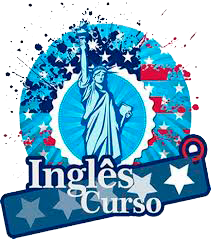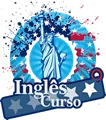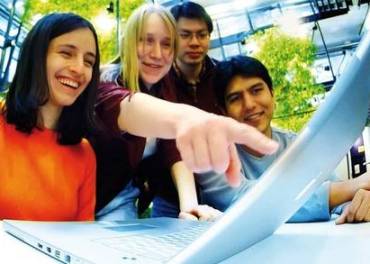What Is an Algorithm? An algorithm is a sequence of instructions that tells how to solve a particular problem. Once the problem has been identified, the next step is to select the best method for solving it. If the problem is a familiar one, standardized algorithms may be available from program libraries. But if standard algorithms are not available or suitable, a new algorithm must be written and then added to the program library. An algorithm must be specified exactly, so there can be no doubt about what to do next, and it must have a finite number of steps. A computer program is an algorithm that is written in a language that a computer can understand, but the same algorithm could be wirtten in several different languages. VOCABULARY Once= uma vez Standardized= padronizados Added= acrescentado, incorporado There can be no doubt= não pode haver dúvida Steps= passos, etapas
Programming Languages Just as there are many human languages, so there are many computer languages. In the early days, people programmed using the computer’s binary code, or what we call “machine language”. When this became difficult, mnemonics were used to make life easier. This is called “assembly language” programming. Finnally, there are the “high-level” languages like BASIC, FORTRAN and ALGOL. These are much more similar to everyday language, and are translated directly or indirectly into the computer’s machine code using the computer’s firmware. BASIC is the language most often used to introduce programming. VOCABULARY In the early days= no princípio, no início Mnemonics= arte de desenvolver a memória mediante processos auxiliares como a associação; mnemônica To make easier= tornar mais fácil High-level= alto nível BASIC= Beginners All-puspose Symbolic Instruction Code FORTRAN= FORmula TRANslation ALGOL= ALGOrithmic Language Firmware= “software” armazenado em ROM em vez de disco
Different Kinds of Memory Read only memory (ROM)– In most computers it is useful to have some of the instructions or whole programs permanently stored inside the computer. There are particular kinds of chips which enable us to do this so that the memory is not lost even when the machine is switched off. These are called ROM chips. ROM stands for “read-only memory”. The word “non-volatile” is often used to describe this kind of memory – meaning that it is not destroyed when the power is switched off. Random-access memory (RAM)– The other kind of memory found inside computers is called RAM. Another name for it is “read/write memory”. RAM chips are the kind which lose their contents when the power is lost – so this kind of memory is sometimes also described as “volatile”. In the computer, RAM is the working memory. Back-up memory– The last kind of memory which concerns us is “back-up” memory. This is memory outside the main body of the computer in which programs can be kept for future use or in which data can be kept until the computer is ready to use it. It could be a cassette tape or a magnetic disk. VOCABULARY Chip= dispositivo que contém muitos transistores e outros componentes montados sobre uma peça de silício Enable us= capacita-nos Random Access memory= tipo de memória da qual a informação pode ser instantaneamente copiada, não importando onde ela esteja localizada; memória de acesso randômico ou aleatório Concern us= diz respeito a nós, concerne a nós
Binary Numbers Binary numbers are well suited for use by computers, since many electrical devices have two distinct states: on and off. They are the numbers computers themselves understand. Composed entirely of zeros and ones, they express all values in powers of two. The advantage of the binary system is that you only need two symbols (0 and 1) to express any number, no matter how big it is. Since computers are basically just large groups of switches, and since these switches can only be either on or off, binary system fits right in; you just define 0 as off and 1 as on and then binary numbers tell the computer which switches to throw. The table below shows some numbers written in binary and decimal form. Note that writing numbers in binary requires more digits than writing numbers in decimal. Decimal Binary Decimal Binary 0 0 11 1011 1 1 12 1100 2 10 13 1101 3 11 14 1110 4 100 15 1111 5 101 16 10000 6 110 17 10001 7 111 18 10010 8 1000 19 10011 9 1001 20 10100 10 1010 VOCABULARY Well suited= well appropriate = bem adequados, aprorpiados In powers= em potências No matter= não importando Since= uma vez que Switches= chaves Either … or= ou … ou Fits = suits = é adequado, apropriado.
Artificial Intelligence Artificial intelligence is the branch of computer science that deals with using computers to simulate human thinking. It s concerned with building computer programs that can solve problems creatively, rather than simply working through the steps of a solution designed by the programmer. One of the main problems of artificial intelligence (AI) is how to represent knowledge in the computer in a form such that it can be used rather than merely reproduced. A computer that tells you the call number of a library book is not displaying artificial intelligence; it is merely echoing back what was put into it. Artificial intelligence would come into play if the computer used its knowledge base to make generalizations about the library’s holdings or construct bibliographies on selected subjects. VOCABULARY Deals with= trata de… Rather than= em vez de Echoing back= devolvendo Would come into play= entraria em ação Library’s holdings= arquivos da biblioteca
What Happens Inside a Computer? When we sit down at a computer, we type on a keyboard which is one of the means of inputting data. And when we type on this keyboard, each letter or number is converted into a series of 0s and 1s. This binary language is what the computer understands. After being converted into 0s and 1s, the data are then changed into electrical impulses which travel over a cable to the computer, where they are stored in memory. Each computer word, called a byte, is assigned a place in a memory cell to await processing. The data, now in the memory cells, are acted upon and processed according to the program being used. The output, or final result, is then achieved and converted back into numbers and letters, which is displayed on TV screen or printed on paper by a printer. Vocabulary Keyboard= teclado Binary language= linguagem que o computador entende, composta de zeros e uns; linguagem binária. Travel= passam de um ponto para outro Byte= oito dígitos binários; oito “bis” Assigned= given = indicado, especificado Achieved= accomplished = alcançado Printer= máquina que imprime; impressora
The Concept of a Database In general we might say that all the files that make up the data processing system of a company form their database. However, the term database is now used in a much broader and more comprehensive sense. To appreciate this let us contrast a conventional data processing system and a database system. A conventional data processing system consists of one or more separate files for each application; in a database system a single large collection of data serves all applications. If we were to survey the software market today, we would find a large number of database systems available. VOCABULARY Database= databank = banco de dados Files= arquivos Make up= formam Broader= larger, wider = mais amplo Sense= sentido, significado To survey= to examine = examiner, pesquisar Software market= Mercado de software, isto é, de programas
Inputting / Outputting Information Magnetic tape– it is one of the principal input/output recording media used with computers and is mainly used for storing intermediate results of computations and for compact storing of large amounts of data, in an ordered sequence. It is much cheaper to store information on tape than in the computer main memory or on a disk memory device, but it takes longer to locate a paritucular data item if it is stored on tape: data must be stored and accessed sequentially. Magnetic disk– it consists of a series of concentric paths or tracks each capable of storing data in magnetically coded form. It looks like a phonograph record and a series of disks is mounted on a vertical shaft. One or more access arms move into the disk to read or write the data stored on it. Disks may be hard (made out of aluminum) or floppy (made out of plastic). Disks may be permanently attached to the drive unit or they may be made up as removable disk packs. Disks may be made even more efficient by using laser beam to read and write data. VOCABULARY Media= pl. of medium (Latin word) = meios Large amounts= great quantities = grandes quantidades Cheaper= more inexpensive = mais barato It takes longer= leva mais tempo Accessed= reached = alcançados, acessados Paths or tracks= trilhas It looks like= parece com, é semelhante a Shaft= eixo Drive unit= dispositivo impulsor Packs= packages = vários discos presos por um eixo Laser beam= raio laser
Assembly Languages Assembly language is a programming language that talks fairly directly to the computer. Unlike machine language, which is what the computer understands, assembly language is mnemonic, so that it can be understood and remembered more easily by a human being; in fact, assembly language is really just machine language in mnemonic form. Assembly languages are specific to a given CPU chip and are named after it (e.g., 8080 assembly language, 6809 assembly language etc.). They are harder to program than a high-level language, but they produce programs that are more efficient and run faster. VOCABULARY Fairly= quase Unlike= ao contrário de, diferente de Just= apenas, justamente CPU= Central Processing Unit = Unidade Central de Processamento Are named= recebem o nome After it= de acordo com ele (chip) Harder= mais trabalhosas Run faster= rodam mais rápido
Mainframes, Minicomputers and Microcomputers A mainframe computer is a large computer system comprised of a large central processing unit, separate memory banks, multiple data-storage devices and peripherals. It is found in computer installations which process immense amounts of data. This powerful machine has a larger repertoire of more complex instructions which can be executed more quickly. A minicomputer is much smaller than the mainframe computer. It was developed to perform limited functions in scientific environments with less computing capacity. It became possible to reduce the size of the computer with the replacement of vacuum tubes by transistors and the development of multicircuit “chips”. A microcomputer is the smallest of the three sizes of computers. The central processor of a micro, called the microprocessor, is built as a single semiconductor device, that is, all the elements necessary to perform all the logical and arithmetic functions are manufactured as a single chip. The microprocessor literally contains a computer on a chip that can pass through the eye of a needle. VOCABULARY Comprised of= including = incluindo, compreendendo, composto de Multiple= tendo muitas partes; múltiplo Repertoire= repertório, conjunto Enveironments= surroundings = ambientes


